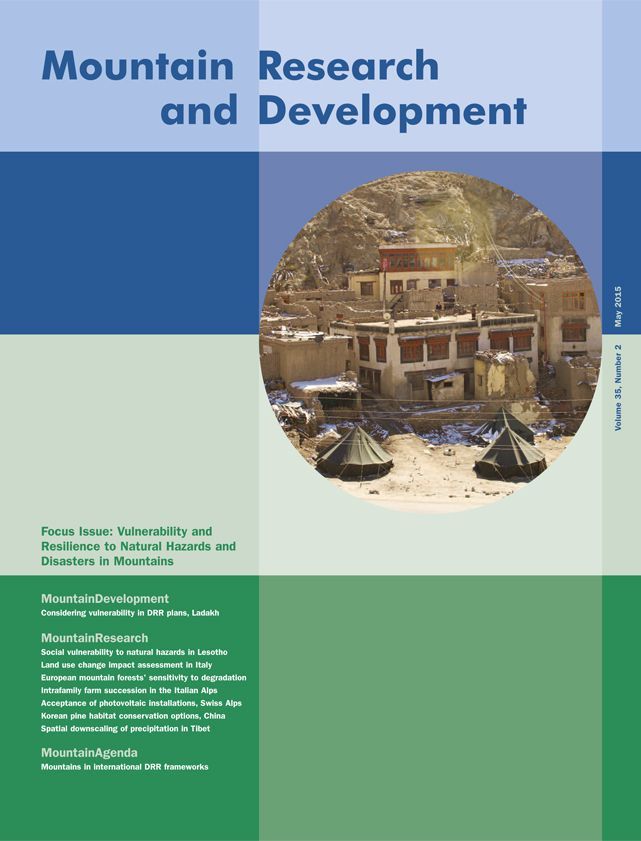Mountain Research and Development, Vol. 35 No. 2
The devastating earthquakes in Nepal have shown once again how vulnerable mountain people are to natural hazards. Science can provide evidence that helps to better focus policy and development efforts to strengthen the resilience of mountain people and ecosystems to natural disasters.

Authors in this issue review the recently adopted Sendai Framework for Disaster Risk Reduction from a mountain perspective and explore to what extent the Hyogo Framework for Action helped communities in Ladakh to effectively cope with catastrophic floods. Others apply a place-based social vulnerability index in Lesotho, show how participatory scenario development revealed high hydro-meteorological risks in the Italian Alps, and assess forest vulnerability in Austria and Bavaria using a GIS-based model.

